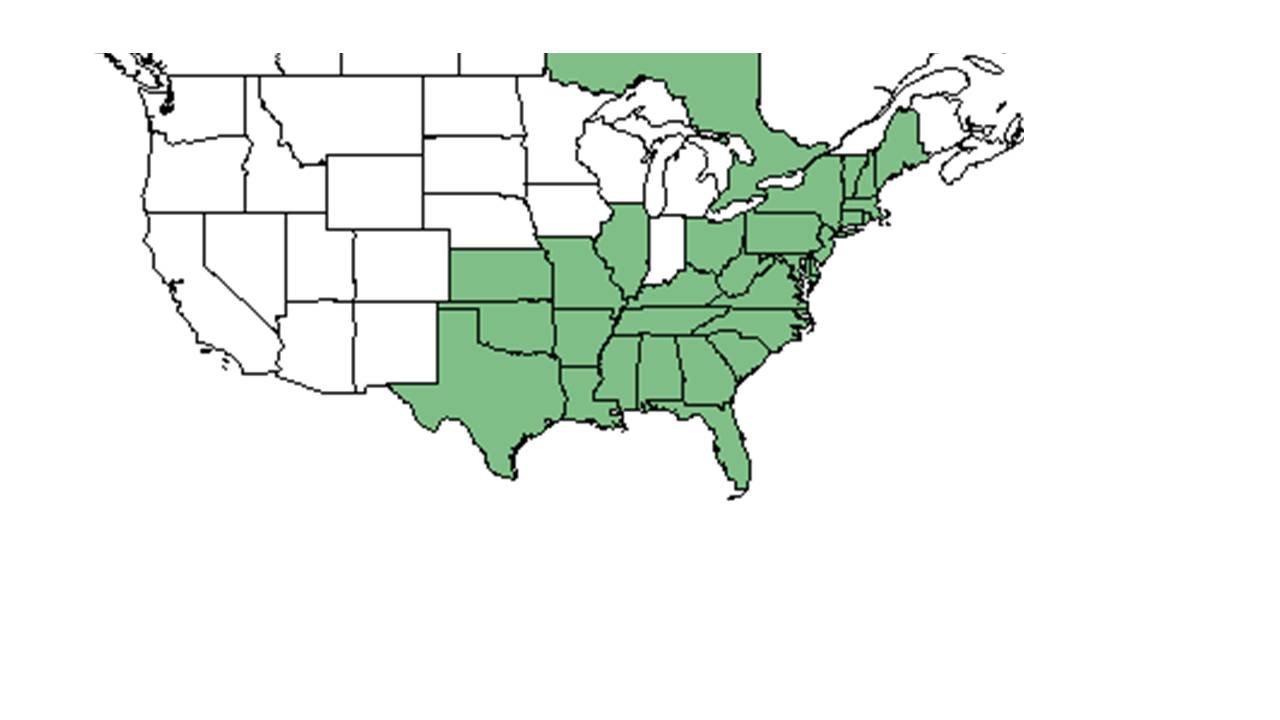Solidago arguta
| Solidago arguta | |
|---|---|
Error creating thumbnail: Unable to save thumbnail to destination
| |
| Scientific classification | |
| Kingdom: | Plantae |
| Division: | Magnoliophyta – Flowering plants |
| Class: | Magnoliopsida – Dicotyledons |
| Order: | Asterales |
| Family: | Asteraceae ⁄ Compositae |
| Genus: | Solidago |
| Species: | S. arguta |
| Binomial name | |
| Solidago arguta Aiton | |

| |
| Natural range of Solidago arguta from USDA NRCS Plants Database. | |
Common names: Atlantic goldenrod, Cut-leaf goldenrod, Sharp-leaved goldenrod
Contents
Taxonomic notes
Synonyms: S. boottii; S. strigosa; S. yadkinensis (Porter) Small; S. vaseyi (A. Gray) Heller.[1]
Varieties: Solidago arguta Aiton var. boottii (Hooker) Palmer & Steyermark; Solidago arguta Aiton var. caroliniana A. Gray; S. arguta ssp. caroliniana (A. Gray) G.H. Morton var.boottii (Hooker) Palmer & Steyermark; S. arguta Aiton ssp. pseudoyadkinensis G.H. Morton.[2]
Description
A description of Solidago arguta is provided in The Flora of North America.
Distribution
Ecology
Habitat
In the Coastal Plain in Florida and Georgia, S. arguta can be found in remnants of natural Quercus hemisphaerica and Carya glabra woods; pine-oak-hickory woods; pine flatwoods; upland submesic woodlands; open pine woodlands on sandy ridges; along margins of magnolia-beech woodlands; dry loam sand of pinewoods; upland mixed woodlands; lakesides; in shade of mature hardwood forests; mature mesic hardwoods; slopes of sinkholes; annually burned closed canopy of pine-hardwoods; and upland pinewoods.[3] In disturbed habitats it can be found in undergrowth controlled hardwood hammocks; disturbed open pine-oak woodlands; roadside depressions; clay roadside bank near waste dump; pastures; dirt roads; and power line corridors. Substrates include sand, loam, humus, limerock, sandy loam, loamy sand, and clay.[3]
Associated species include Quercus hemisphaerica, Carya glabra, Quercus muehlenbergii, Cornus florida, Nyssa sylvatica, Ostrya, Magnolia grandiflora, and Pinus taeda.[3]
Phenology
It has been documented flowering February through December and fruiting February through November.[3][4]
Fire ecology
Populations of Solidago arguta have been known to persist through repeated annual burning.[5]
Herbivory and toxicology
Solidago arguta has been observed to host aphid species such as Uroleucon sp. (family Aphididae) as well as the planthopper Pissonotus guttatus (family Delphacidae).[6]
Conservation, cultivation, and restoration
Cultural use
Photo Gallery
References and notes
- ↑ Weakley, A.S. 2015. Flora of the southern and mid-atlantic states. Working Draf of 21 May 2015. University of North Carolina at Chapel Hill, Chapel Hill, North Carolina.
- ↑ Weakley, A.S. 2015. Flora of the southern and mid-atlantic states. Working Draf of 21 May 2015. University of North Carolina at Chapel Hill, Chapel Hill, North Carolina.
- ↑ 3.0 3.1 3.2 3.3 Florida State University Robert K. Godfrey Herbarium database. URL: http://herbarium.bio.fsu.edu. Last accessed: July 2015. Collectors: James R. Burkhalter, A. F. Clewell, Robert K. Godfrey, Loran C. Anderson, Angus Gholson, Wilson Baker, R. Kral, J. P. Gillespie, Richard S. Mitchell, Travis MacClendon, Karen MacClendon, W. D. Reese, R. Komarek, J. M. Kane, R. A. Norris, Annie Schmidt. States and Counties: Florida: Calhoun, Escambia, Gadsden, Jackson, Jefferson, Leon, Liberty, Okaloosa, Wakulla, Walton, Washington. Georgia: Grady, Thomas. Compiled by Tall Timbers Research Station and Land Conservancy.
- ↑ Nelson, G. PanFlora: Plant data for the eastern United States with emphasis on the Southeastern Coastal Plains, Florida, and the Florida Panhandle. www.gilnelson.com/PanFlora/ Accessed: 19 MAY 2021
- ↑ Platt, W.J., R. Carter, G. Nelson, W. Baker, S. Hermann, J. Kane, L. Anderson, M. Smith, K. Robertson. 2021. Unpublished species list of Wade Tract old-growth longleaf pine savanna, Thomasville, Georgia.
- ↑ Discoverlife.org [1]